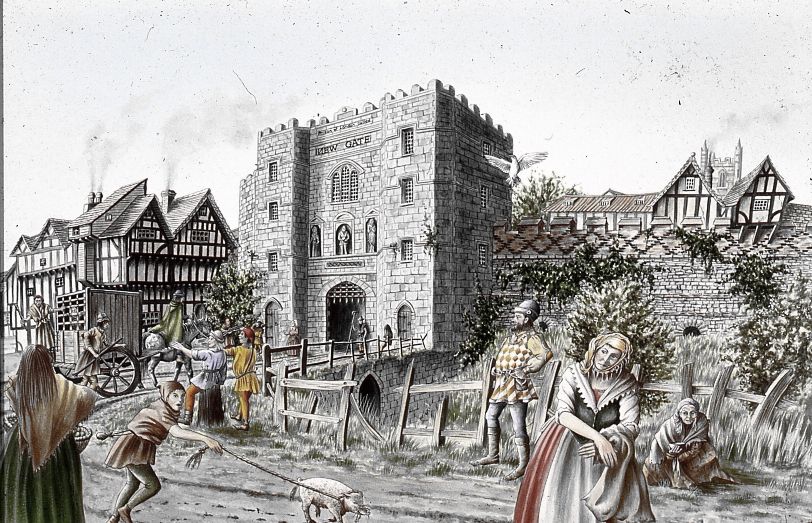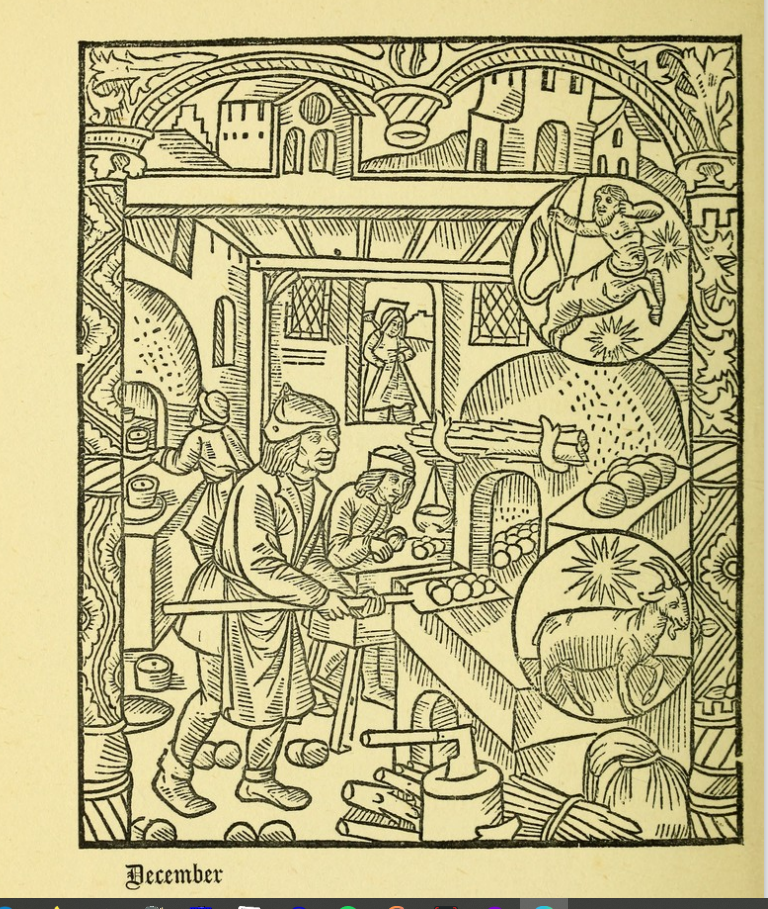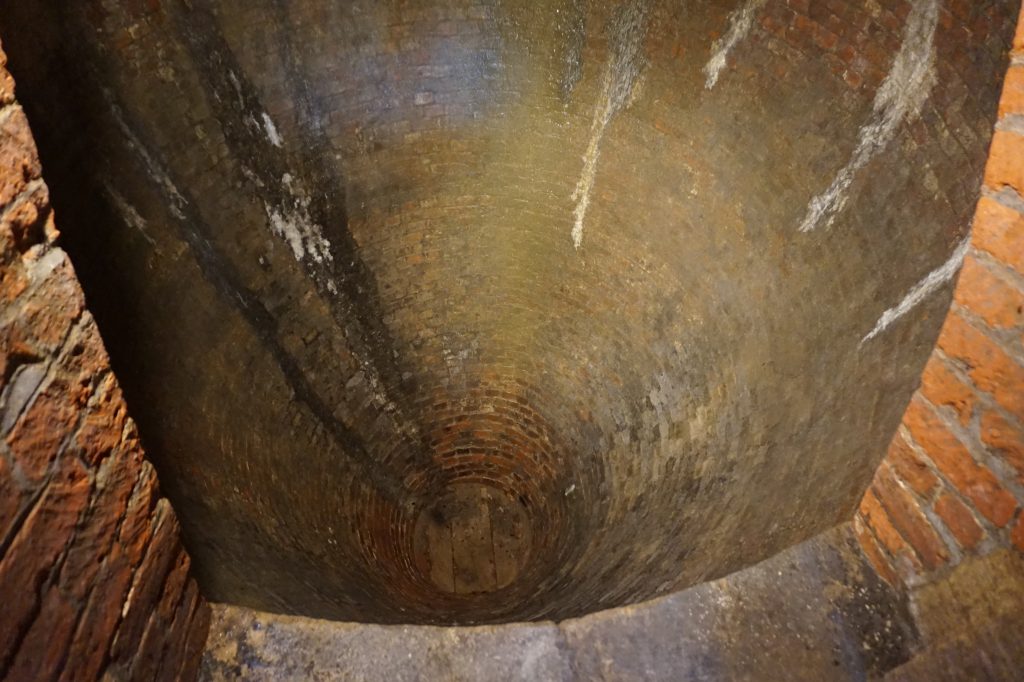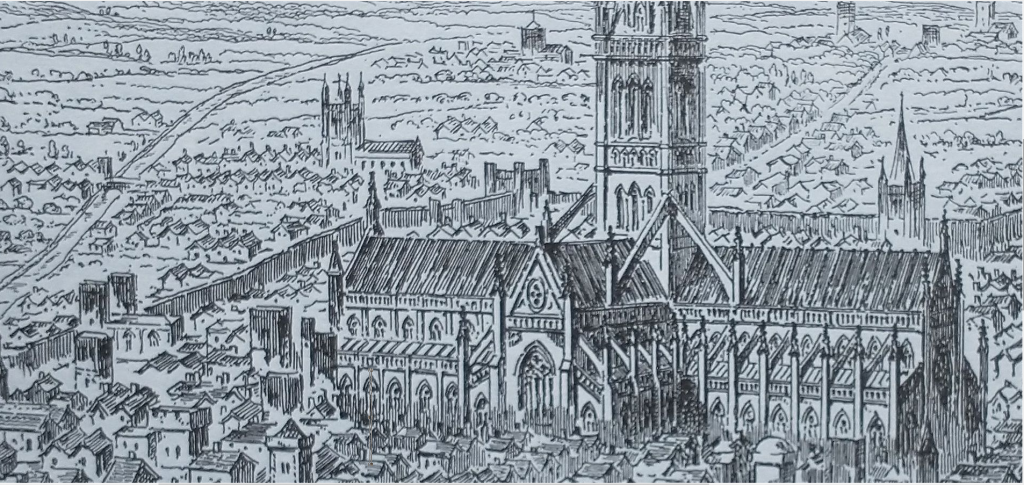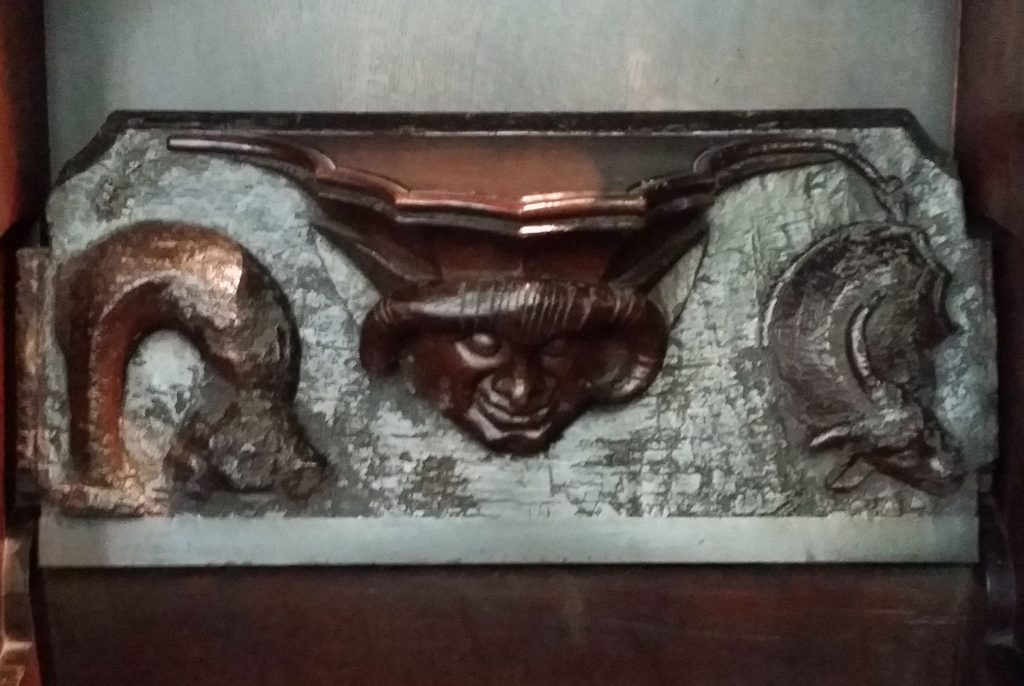
Worlidge ‘s ‘Systema Agriculturae’ of 1697 says this is the time to destroy snails. He suggests that, at Michaelmas, you create a shelter for snails against a wall using bricks or boards. In Early December the plantsman can get his revenge on the little blighters, all unsuspecting and snuggled up in their cosy den.
The RHS has some more modern advice, but generally takes a negative opinion of snails. The Birmingham and Black Country Wildlife Trust take a much more positive view of snails and slugs and proposes their contribution to nature should be rewarded by learning to love and live with the little critters.
(Thanks to Charles Knightly’s Perpetual Almanac)
Improving the cider before Christmas

The caption reads in the original French:
Abondance de biens ne nuit pas(You can never have too much of a good thing)
Britain is by far the largest Cider drinking nation, drinking 32% of the global total. South Africa is second at 15%. One of the reasons is that Britain does not have the climate for mass wine making, while it has an excellent climate for growing apples, particularly in the West Country. But other counties also produce it including: Somerset, Devon, Dorset, Herefordshire, Worcestershire, Gloucester, Kent, Sussex, Suffolk, Norfolk and Cider has expanded into other counties such as Buckinghamshire and Cheshire.
As Cider makes approach Christmas, they will be worrying about their Cider is doing. And old trick if your cider was a bit off was to add half a peck of wheat to restart the fermentation to make it more mild and gentle. Use Mustard or two or three rotten apples to clear the cider.
Although it’s all a little Thomas Hardy, Cider expert Gabe Cook provides instruction here in how to make cider from your own cider tree without investing in a huge fruit press. To buy small cider presses and cider making kits click here.
First Published on December 5th 2022, revised and republished on December 5th 2023 ans 2024
